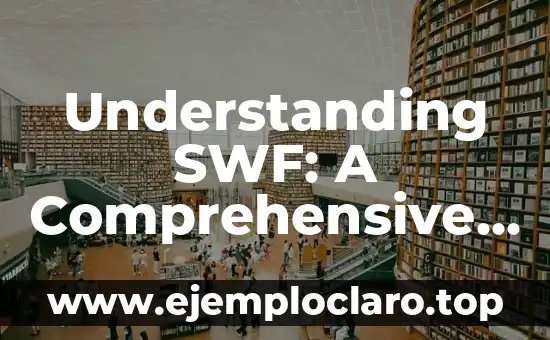In the realm of literature and storytelling, themes are the backbone that gives depth and meaning to a narrative. Often, these themes are supported by subthemes, which are secondary ideas that enhance the main theme. This article delves into the significance of these subthemes, exploring their role, examples, and impact on storytelling.
What is the Meaning of a Subtheme?
A subtheme is a secondary idea that supports the main theme of a story, adding layers of complexity and depth. It provides additional insights into the narrative, often reflecting the broader human experience. For instance, in a story about courage, a subtheme might explore the consequences of fear.
Historically, the concept of subthemes can be traced back to classical literature, where authors like Shakespeare used them to enrich their plays. For example, Hamlet explores themes of ambition and madness, with subthemes of mortality and betrayal.
Exploring Secondary Themes in Literature
Secondary themes, or subthemes, are integral to literature as they allow authors to explore multiple facets of human nature. They provide a nuanced understanding of the main theme, making the narrative more engaging. In To Kill a Mockingbird, the primary theme of racial injustice is supported by subthemes of moral growth and the loss of innocence.
También te puede interesar

SWF, which stands for Small Web Format, is a file format used for multimedia, animations, and interactive content. This guide explores its significance, history, and applications, providing a thorough understanding of this format.

A specimen, often referred to as a sample or example, is a representative item used for study, analysis, or display. It serves as a crucial tool across various scientific disciplines, offering insights into the characteristics and properties of the subject...

Employment rate indices are essential for assessing the health of a labor market. They indicate the proportion of the population that is employed, offering valuable insights into economic stability and growth.

Intoxication, a term often associated with substance use, holds a deeper significance in the realm of bioneuroemotion. This field explores the intricate dance between biological processes, neurological functions, and emotional states. Understanding intoxication here involves examining how substances affect not...
These subthemes often emerge through character development and plot progression, offering readers a multifaceted perspective on the story’s central idea.
Examples of Subthemes in Literature
- The Great Gatsby by F. Scott Fitzgerald
Subthemes: The corrupting influence of wealth and the American Dream’s illusion.
- Pride and Prejudice by Jane Austen
Subthemes: Social class and personal pride.
- The Catcher in the Rye by J.D. Salinger
Subthemes: Adolescent alienation and the challenges of growing up.
Each of these subthemes adds depth to the narrative, enriching the reader’s understanding of the main theme.
The Role of Subthemes in Story Development
Subthemes play a crucial role in story development by:
- Enriching the Narrative: They add layers of complexity, making stories more engaging.
- Providing Character Depth: Subthemes often drive character motivations and development.
- Enhancing Thematic Resonance: They allow exploration of multiple ideas, giving stories a broader appeal.
Top Subthemes Commonly Explored in Stories
- Redemption: The journey from wrongdoing to forgiveness, as seen in A Christmas Carol.
- Betrayal: The consequences of broken trust, explored in The Kite Runner.
- Love vs. Duty: A classic conflict found in Romeo and Juliet.
- Identity: The search for self, as in The Catcher in the Rye.
- Mortality: The inevitability of death, a theme in The Book Thief.
These subthemes resonate universally, connecting with readers on a deeper level.
Exploring Hidden Meanings in Texts
Authors often weave subthemes into their narratives to convey deeper messages. These hidden meanings encourage readers to interpret the text beyond its surface level, engaging them more deeply with the story.
What is the Purpose of Subthemes?
Subthemes serve to enhance the main theme by providing additional layers of meaning. They allow authors to explore various aspects of human experience, making stories more relatable and thought-provoking.
Deciphering Subtopics in Narrative Structures
Subtopics, or subthemes, are essential elements in narrative structures. They help organize ideas and provide a framework for exploring complex themes, ensuring the story is both coherent and engaging.
The Importance of Thematic Layers in Writing
Thematic layers, including subthemes, are vital in writing as they add depth and complexity. They allow authors to address multiple ideas, creating a rich and nuanced narrative that captivates readers.
What Does Subtheme Mean?
A subtheme is a secondary idea that supports the main theme in a story. It provides additional insights and layers, enriching the narrative and offering a more comprehensive understanding of the central theme.
Where Does the Concept of Subtheme Originate?
The concept of subthemes originates from literary theory, where scholars analyze how narratives are structured. This concept has evolved over time, influenced by various literary movements and critical approaches.
Understanding Subtopics in Academic Writing
In academic writing, subtopics help organize ideas and present information logically. They allow writers to explore different aspects of a main topic, ensuring a thorough and comprehensive discussion.
How Do Authors Use Subthemes Effectively?
Authors use subthemes to add depth and complexity to their narratives. By integrating these secondary ideas, they create stories that resonate on multiple levels, engaging readers intellectually and emotionally.
How to Identify and Use Subthemes in Your Writing
To identify subthemes, look for recurring ideas that support the main theme. Use them to explore different facets of your story, enhancing its depth and appeal. Examples include developing characters around these subthemes and weaving them into the plot.
INDICE

